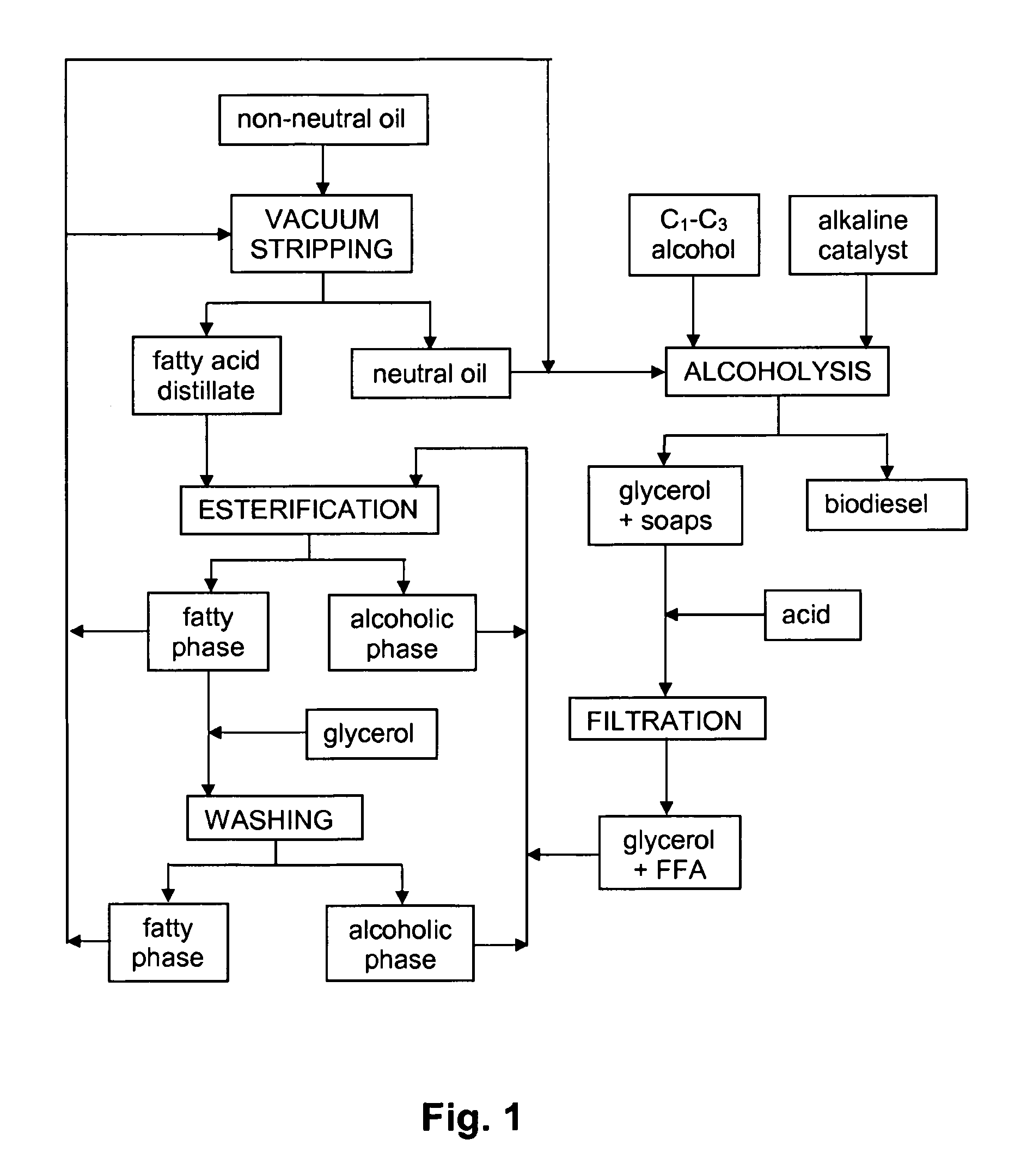Method for Producing Biodiesel
a biodiesel and biofuel technology, applied in biofuels, biofuels, biofeedstocks, etc., can solve the problems of inability to remove the water formed by esterification, inability to use enzymes, and inability to remove unwanted side-products, so as to maximise the yield and maximise the effect of productivity
- Summary
- Abstract
- Description
- Claims
- Application Information
AI Technical Summary
Benefits of technology
Problems solved by technology
Method used
Image
Examples
example 1
[0051]In this example, a palm oil fatty acid distillate with an FFA content of 90% was mixed with pure glycerol in a molar ratio of 1:1. The mixture was introduced into a stirred reactor held at a pressure of 5 mbar absolute, and kept at 68° C. CALB L lipase (liquid enzyme from Candida Antartica lipase B supplied by Novozymes A / S Denmark) was added in a concentration of 175 LU per g FFA. After 8 hours reaction, the FFA content had been reduced to 7% due to the formation of mono-, di- and triacylglycerides.
[0052]This example shows that the liquid enzyme from Candida Antartica is capable of reducing high levels of FFA within a reasonable period of time.
example 2
[0053]In this example, the effect of the esterification temperature was investigated. The same palm oil fatty distillate and the same enzyme preparation were used as in example 1 and the FFA to glycerol ratio was again 1:1, but the enzyme dosage was only 100 LU per g FFA. After 8 hours reaction, the FFA content of the reaction carried out at 75° C. had dropped to 9% whereas when the reaction was carried out at the lower temperature of 58° c., the residual FFA content was higher at 15%. The experiment shows that operating at the higher of the two temperatures led to a larger extent of FFA esterification but the example does not indicate whether this difference is due to differences in enzyme activity or in water volatility.
example 3
[0054]In this example, another lipase was tested. The same palm oil fatty distillate as used in example 1 was used and the FFA to glycerol ratio was again 1:1. The enzyme tested was Lipozyme TL IM, an immobilised enzyme from Thermomyces lanuginosus supplied by Novozyme A / S, Denmark; it was used in an amount of 4% by weight on oil. The reaction temperature was 68° C. and the reactor was kept at 5 mbar absolute. After 6 hours the FFA content of the reaction mixture had fallen to 79%.
[0055]This experiment shows that Lipozyme TL IM is not a suitable enzyme for the process of the invention.
PUM
| Property | Measurement | Unit |
|---|---|---|
| temperature | aaaaa | aaaaa |
| temperature | aaaaa | aaaaa |
| temperature | aaaaa | aaaaa |
Abstract
Description
Claims
Application Information
 Login to View More
Login to View More - R&D
- Intellectual Property
- Life Sciences
- Materials
- Tech Scout
- Unparalleled Data Quality
- Higher Quality Content
- 60% Fewer Hallucinations
Browse by: Latest US Patents, China's latest patents, Technical Efficacy Thesaurus, Application Domain, Technology Topic, Popular Technical Reports.
© 2025 PatSnap. All rights reserved.Legal|Privacy policy|Modern Slavery Act Transparency Statement|Sitemap|About US| Contact US: help@patsnap.com

